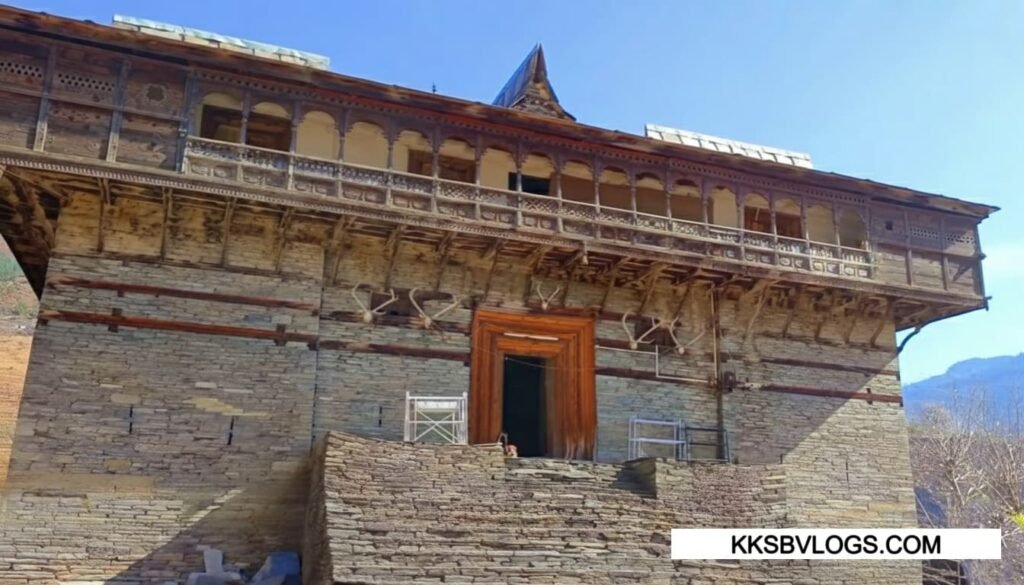1. Introduction
Amid the hills of Shimla, there is a place where time seems to have stopped — where the deodar trees, the cool breeze, and the fragrance of the old era come together to tell a story.
This is the story of Sainj Darbar or Sainj Palace, a heritage palace near Theog that holds within itself the royal legacy of Himachal.
Sainj Darbar is not an ordinary tourist spot; it is a living heritage structure where even today the descendants of the Rana family live.
The old pictures hanging on the palace walls, the wooden architecture, and the sound of temple bells together make this place even more special.
This palace is a perfect destination for those who want to explore offbeat royal sites in Himachal Pradesh and understand the stories that are not found in history books.
2. History and Facts of Sainj Palace
The History of Theog State
In earlier times, Theog was an independent hill state that was highly respected among the surrounding kingdoms near Shimla.
Its rulers, known as the Ranas of Theog, traced their lineage to the Chandela Rajput dynasty, which is famous for building the temples of Khajuraho.
Between the 1700s and 1780s, Raja Padam Chand built his royal palace here — which we know today as Sainj Palace or Sainj Darbar.
It was both the administrative and residential center of his kingdom.
During the British period, Theog maintained its autonomy, and after independence in 1948, the state was merged into Himachal Pradesh.
But Sainj Palace still remains with the same Rana family, which has preserved this heritage from generation to generation.
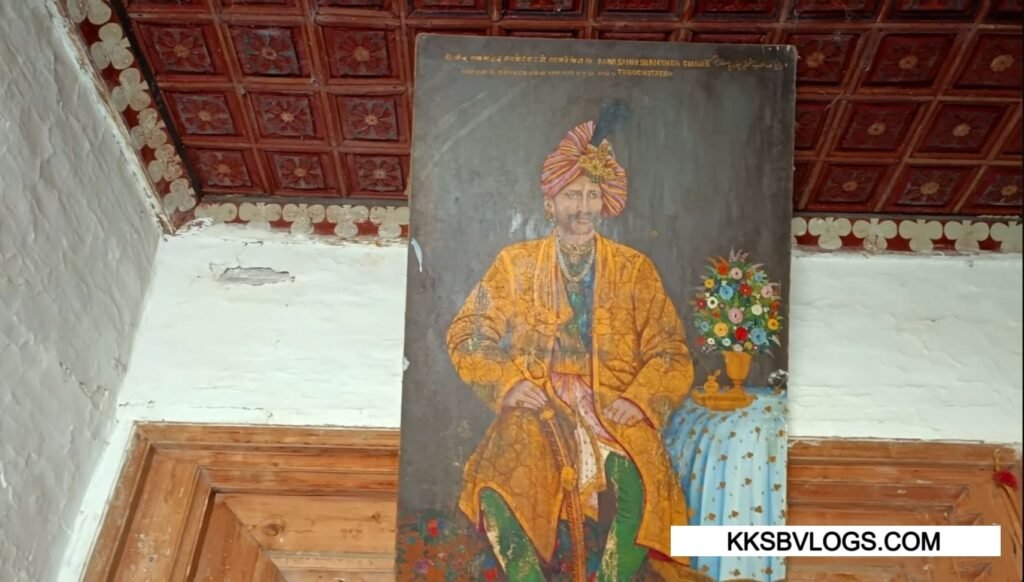
Present Day Facts
At present, the palace has more than 50 rooms, some of which are still used by the family.
Inside the rooms are old black-and-white photographs, paintings, and royal artefacts that keep the history of Theog alive.
On the top floor, there is a small temple where daily worship takes place.
This temple is dedicated to their kul devta (family deity) and is considered the spiritual heart of the palace.
At the same time, a new palace structure is also under construction nearby — which is being built in such a way that it preserves the heritage look while adding a modern touch.
This continuity shows how an old legacy still lives on.
3. Architecture and Structure
Sainj Palace is a living example of Himachali architecture.
The entire palace is built using the Kath-Kuni technique, in which stone and wood interlock to give natural strength and also make the structure earthquake-resistant.
The palace is built on a cliff from where there is a stunning view of the valley below.
Three sides are surrounded by natural slopes and forest, while the front side has a heavy stone wall and a carved wooden gate that gives it a fort-like appearance.
Inside, there is a large Darbar Hall where royal meetings were held in earlier times.
On the upper floors are carved balconies and wooden corridors through which sunlight enters.
Fine lattice work and carvings on deodar wood are still in perfect condition.
What makes it unique is the combination of design inside and outside — on one side royal grandeur, and on the other the simplicity of the hills.
This contrast makes Sainj Darbar one of the most interesting heritage palaces in the Shimla region.

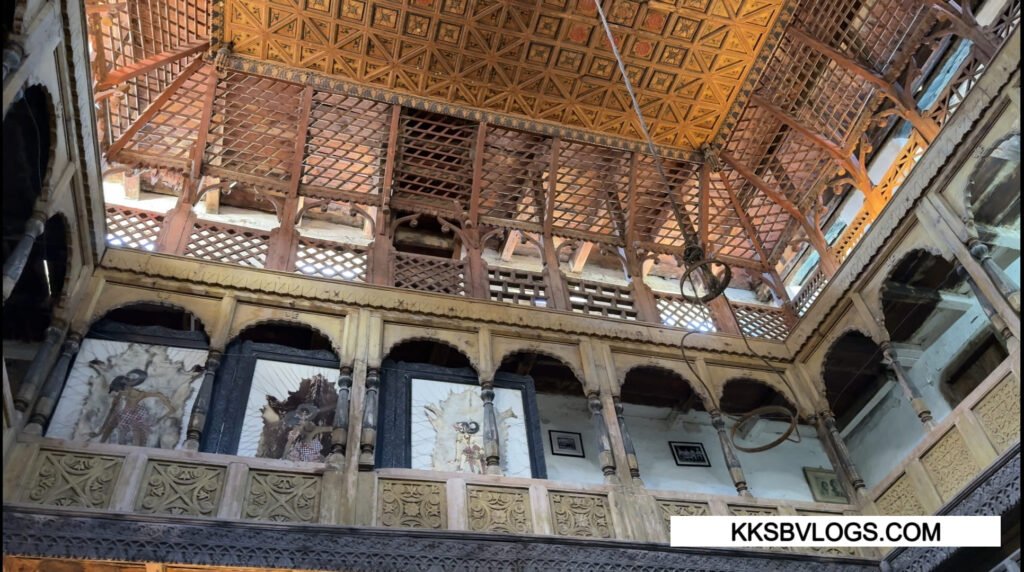
4. Entry and Permission for Sainj Palace
Sainj Darbar is a private heritage property where even today the descendants of the Rana family live, and the entire maintenance of the palace is in their hands.
You can enter here only if you get permission from the family — otherwise, entry is strictly restricted.
Many travelers only go up to the outer view and see the palace from outside.
From the gate, the carved wooden structure and the valley view are clearly visible, which makes it a beautiful photo spot.
If you want to visit inside, you must first contact the Rana family directly — the local panchayat has no role in this.
The reason behind this restriction is simple — the palace is still a residential heritage home, where the portraits, old documents, and religious artefacts of their ancestors are preserved.
The family itself lives in some of the rooms and carries out its regular maintenance.
If you get permission to go inside, you will see more than 50 rooms inside — with wooden floors, brass lamps, and century-old frames.
On the walls hang old black-and-white photographs and portraits of former Ranas — all of which give the feeling of a living museum.
5. Things to Do at Sainj Palace
Even if you do not get entry inside, the area around Sainj Darbar is so picturesque that exploring it becomes a beautiful experience in itself.
1. Outer Photography and Architecture Walk
The front façade and cliff-side view of the palace are both breathtaking.
Capturing the wooden frames, balcony corners, and carvings is perfect for heritage photography.
In the morning, the golden tone of the sunlight, and in the evening, the soft shadow effect, make it even more charming.
2. Interact with Locals
By talking to nearby villagers, you can hear old stories — how earlier Rana Sahib’s Darbar was held here, how the annual worship in the temple used to take place, and how the palace was maintained for generations.
3. Temple Visit (Top Floor Shrine)
On the top of the palace there is a small temple where idols of devi-devta are installed.
The family worships here daily, and if permission is granted, visiting this temple gives a divine feeling.
4. View Point Trail
A natural trail below the palace gives a full panoramic view of the Sainj Valley.
While walking, the deodar trees and cool air create a serene atmosphere — perfect for peace lovers and nature photographers.
6. Festivals and Cultural Heritage
Sainj Darbar and the Theog region have a deep connection with local culture.
The Rana family has always followed its traditions and devta rituals with devotion.
In earlier times, a Raj Darbar Mela used to be organized inside the palace — where villagers came to pay respect to the Rana family with folk songs, naati dance, and traditional music.
Even today, during the festive season, lamps are lit inside the palace temple and the kul-devta puja tradition continues.
In nearby villages, annual fairs and devta yatras are still held, keeping the spiritual connection of Sainj Darbar alive.
The morning bells and evening chants coming from the palace echo throughout the valley — creating a perfect blend of heritage and faith.
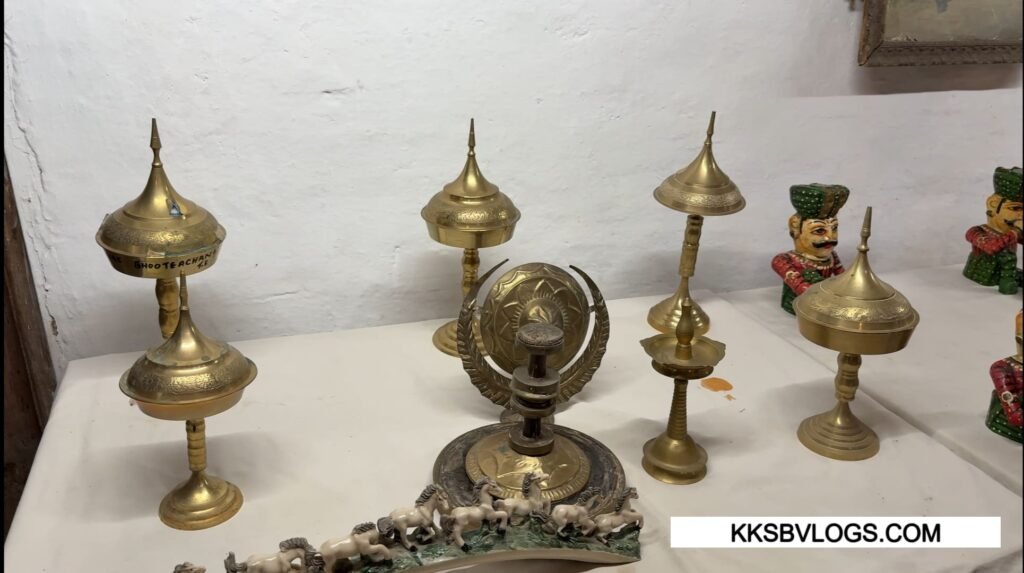

7. Best Time to Visit Sainj Palace
The best time to visit Sainj Darbar completely depends on the weather and personal interest — because every season gives this place a different color.
Spring to Early Summer (March – June)
During this period, Theog’s weather is the most pleasant. Morning sunlight gives the wooden frames of the palace a natural golden glow, and the valley views remain crystal clear. This time is considered the best for photography and exploration.
Monsoon (July – August)
During the rainy season, the place becomes lush green, but the narrow roads and hill curves become a bit risky. Between mist and clouds, the palace gives a dreamy scene — but only experienced drivers should travel during this season.
Autumn (September – October)
This season is ideal for travelers — clear blue sky, dry weather, and soft light give a perfect combination for photography. Local fairs and devta rituals are also organized during this time.
Winter (November – February)
In winter, Sainj Darbar becomes a royal snow scene. Sometimes light snow falls around the palace and the deodar trees wear a white coat. The cold is intense, but if you love heritage and snow together, this season will be unforgettable.
8. How to Reach Sainj Palace
By Road
Sainj Darbar is located about 15 km from Theog and approximately 48 km from Shimla.
The road from Shimla to Theog on National Highway 5 is in excellent condition. From Theog to Sainj village, the road is slightly narrow but easily motorable. Private car, cab, or taxi is the best option.
By Bus
Regular buses are available from Shimla ISBT to Theog. From Theog Bus Stand, local jeeps and shared taxis go directly to Sainj village.
By Train & Air
Nearest Railway Station – Shimla (around 32 km)
Nearest Airport – Jubarhatti Airport (about 68 km)
The Kalka–Shimla toy train is also a memorable route if you want to enjoy a scenic journey.
Travel Tips ⚠️
- Drive cautiously on narrow roads.
- Visit early morning or during the day for good visibility.
- Always check weather conditions, especially in winter or monsoon.
9. Visitor Information & Tips
Sainj Darbar is a heritage private property, so it is important to keep a few points in mind while visiting:
- Permission Required: Entry inside the palace is possible only after getting direct permission from the Rana family. Without permission, visitors can explore only the outer area.
- No Fixed Timings: There are no official visiting hours, but 8 a.m. to 5 p.m. is considered the best time.
- Photography: You can take photos from outside. Interior photography is allowed only if permission is specifically granted.
- Dress & Behavior: Maintain modest dressing and polite behavior — remember, this is a residential heritage site.
- Respect the Heritage: Do not litter around the palace, avoid loud music, and respect the local culture.
- Safety Note: Be careful near the cliff edges — in some places, there are no guard rails.
For visitors, this place is a reminder that heritage doesn’t just mean walls and design — it also means the legacy of people and their connection.
10. Our Experience at Sainj Palace, Theog
Visiting Sainj Darbar in Theog was one of those rare experiences where history and emotion come together. We personally went inside because we had received permission from Rana Sahib himself. He guided us and told us everything about the palace.
My experience was truly wonderful — there was a special vibe inside. We saw many very old things and learned its history directly from him.
We witnessed the old wooden corridors, ancient photographs, and artefacts that showed the royal touch of Himachal’s past.
Rana Sahib explained how his ancestors ruled from this very palace and how the family still preserves more than 50 rooms, some of which they continue to live in today. On the top floor, there is also a small temple made with the idols of devi-devta, where daily prayers take place.
The positivity of that place, the calm surroundings, and the feeling of pride in preserving the heritage of Sainj Darbar made this visit unforgettable.
Inside the palace, we truly felt that history is still alive here — and that’s what makes Sainj Darbar one of the most special and living heritage sites of Himachal.
11. Nearby Attractions
The area around Sainj Darbar is naturally rich and historically important.
If you are traveling here, some nearby destinations offer the perfect mix of heritage and nature:
- Chail Palace (Chail) – Around 45 km from Theog, Chail is a royal hill town famous for Chail Palace, built by Maharaja Bhupinder Singh of Patiala. It is now known as a heritage hotel. From here, you can enjoy panoramic views of the Shivalik Ranges, and for heritage lovers, it is a must-visit spot.
- Kotkhai Palace – An old royal residence built in traditional Kath-Kuni style, connecting directly to Theog’s cultural lineage.
- Tara Devi Temple – An ancient temple situated on the Shimla route, offering a divine view of the entire valley.
- Fagu & Kufri – Ideal hill getaways for apple orchards, snow points, and adventure sports.
- Deori Temple (Theog) – A temple of local deities where pahadi rituals and traditions are still practiced.
- Theog Main Market – A good stop for local handicrafts, Himachali food, and woollen items.
Sainj Palace Location, Photos & Videos
Location of the Sainj Palace
Exact Location:
Sainj Darbar is situated in Sainj village, Theog tehsil, Shimla district, Himachal Pradesh, about 15 km from Theog town and nearly 48 km from Shimla on National Highway-5.
YouTube:
Watch the full heritage exploration video of Sainj Darbar on KKSB Vlogs for a detailed on-ground experience.
Instagram:
Catch short travel reels, glimpses of the palace, and nearby attractions on @official_KKSB, where local Himachali stories and hidden heritage locations are shared regularly.
Google Map Embed:
(Google map embedded at the end of the Blog)
Photos of Sainj Palace
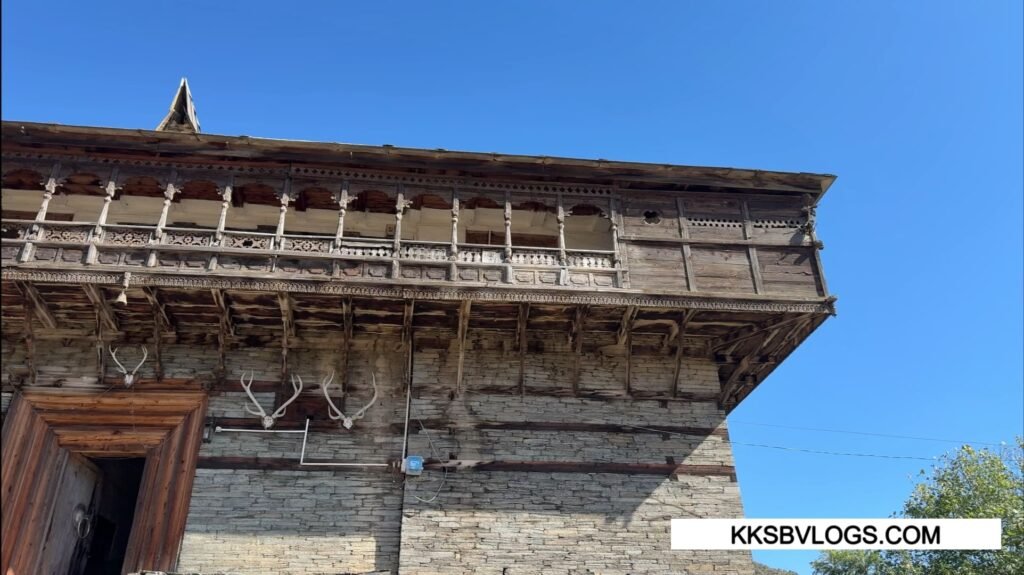
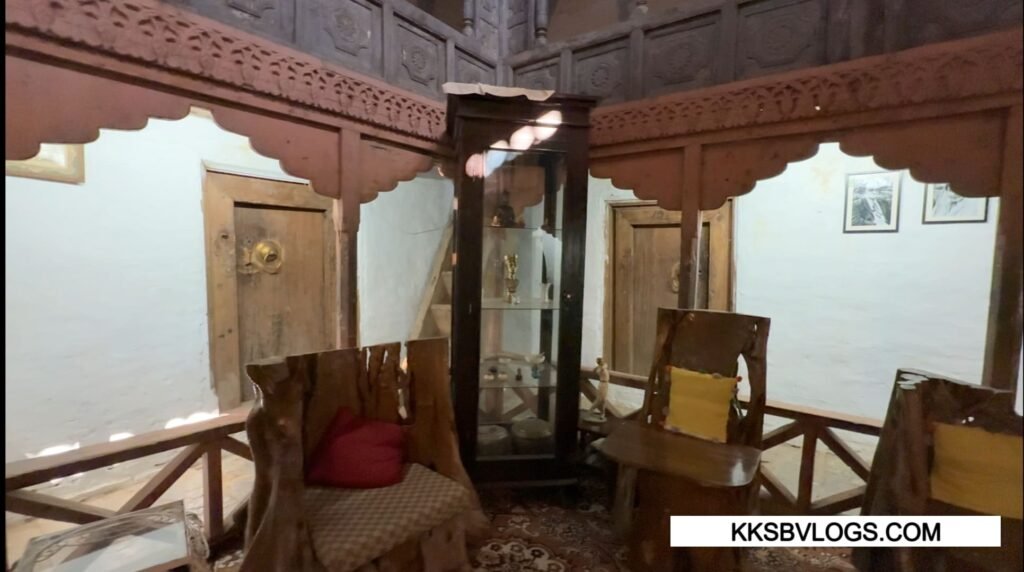
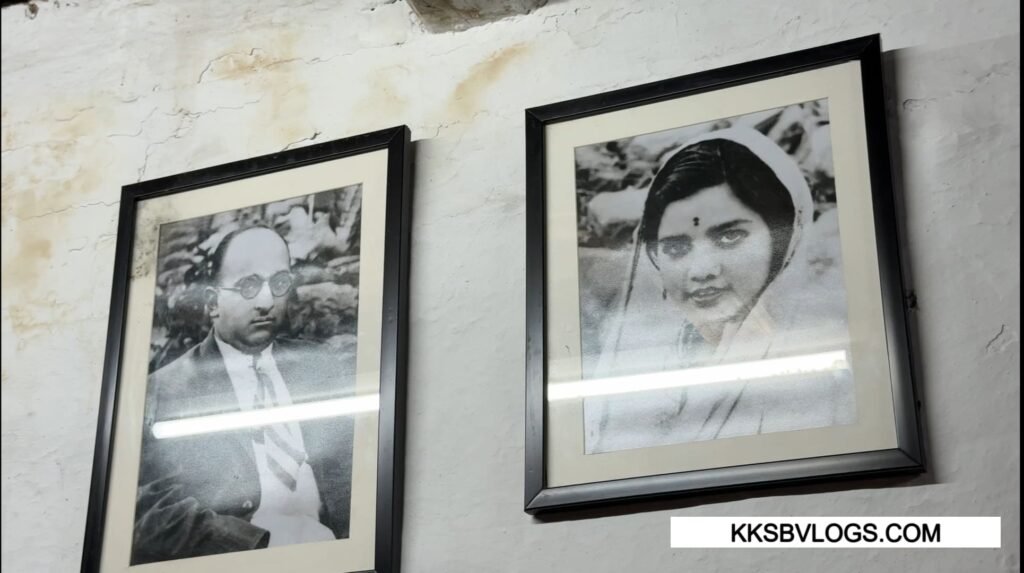

Frequently Asked Questions about Sainj Darbar (Theog)
What is Sainj Darbar and where is it located?
Sainj Darbar, also known as Sainj Palace, is a royal heritage palace located in Sainj village, Theog (Shimla district) of Himachal Pradesh. It was once the seat of the Rana family of Theog Riyasat and remains one of the few private heritage properties still maintained by their descendants.
Who owns Sainj Darbar at present?
The descendants of the Rana of Theog still live here and personally take care of the palace, preserving this historic property for generations.
Can tourists enter Sainj Darbar?
No, general public entry is not open without permission. Since it is a private heritage residence, visitors can view the palace from outside, but access inside is possible only with direct permission from the Rana family.
How many rooms are there inside Sainj Darbar?
According to the royal family, the palace has more than 50 rooms, each reflecting the old Himachali royal lifestyle. Some rooms are still in use by the family, while others are preserved with antique items, portraits, and photographs from earlier centuries.
What is the best time to visit Sainj Darbar, Theog?
The best time to visit is from March to June and September to October, when the weather is pleasant and roads are safe. These months also offer clear valley views and good natural light for photography.
How can I reach Sainj Darbar from Shimla?
Sainj Darbar is about 30 km from Shimla. Drive via NH-5 till Theog, then take the local Sainj village road (around 3 km). The route is scenic with pine forests and valley views — ideal for heritage and nature lovers.
Why is Sainj Darbar famous among heritage travelers?
Because it is one of the few living royal palaces in Himachal Pradesh where the original Rana family still resides. The palace’s Kath-Kuni architecture, spiritual atmosphere, and authentic Himachali culture make it a unique stop for travelers exploring hidden royal places near Shimla.
Sainj Darbar is not just a historical site — it is a rare connection between the royal past and living heritage of Himachal Pradesh.
From its carved wooden walls to the devta temple on the top floor, everything here reflects the pride, devotion, and artistry of the hill royalty that once ruled Theog.
A visit here reminds you that heritage is not always behind museum glass — sometimes it is still breathing, still alive, and still part of a family’s everyday life.
If you truly wish to understand the soul of Himachal’s hidden history, Sainj Darbar deserves a quiet, respectful visit.

